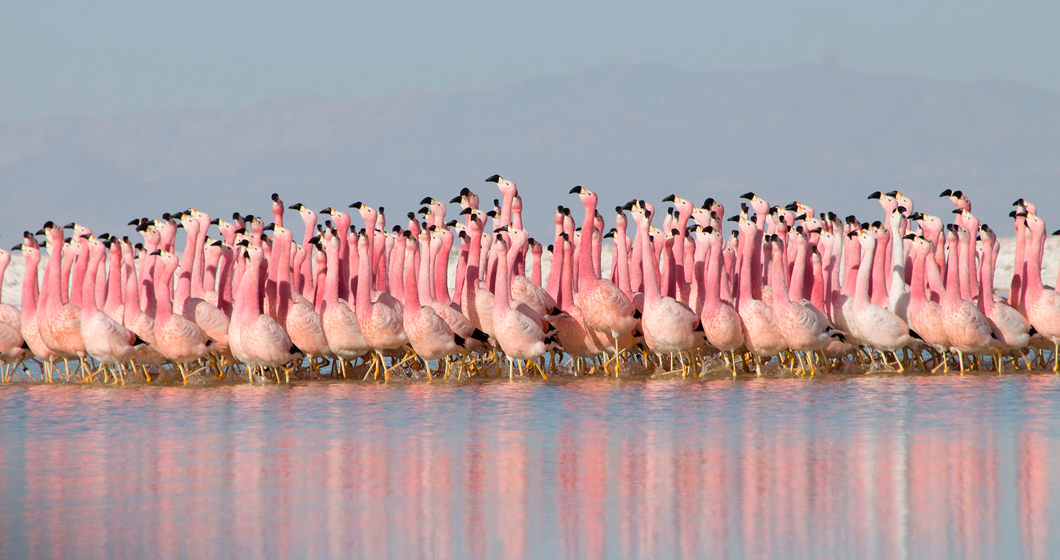David Attenborough; the man, the myth, the legend!
Continuing his outstanding career as a naturalist and our favourite narrator from every nature documentary ever, Planet Earth II has graced screens all over the world and it is everything I hoped it would be, and more.
The original trailer, released in October of 2016, racked up almost ten million views on YouTube alone. As people watched the world’s most famous iguana hatchling escape an enormous pit of racer snakes in a dramatic, high-stakes chase across a barren island, the publicity for Planet Earth II shot through the roof and its release was eagerly awaited in Australia.
Being the self-confessed nature nerd I am, I had to watch them all and I had to watch them ASAP.
From islands to mountains to jungles, this documentary series takes you on a trip around the world, showcasing breathtaking scenery in high definition. Each of the seven episodes hone in on diverse plant and animal communities across the world, categorised by landscape and followed by a short yet fascinating ‘making of’ feature.
The soothing voice of David Attenborough, accompanied by the soul-summoning music of Hans Zimmer captures and holds the attention of even the most uninterested viewers. You don’t have to give a fat rats about nature, I promise you that you will be captivated from the opening credits.
The universal reach of the series is due to the incredible production of footage, accessibility of information and creatively relatable tales of survival. The multinational documentary series has utilised new technologies, including ultra high definition filming, drone cameras, infrared and night vision cameras, and remote recording. Planet Earth II Diaries at the end of each episode showcase this incredible detail and immense skill that is required to film each sequence and scene.
Planet Earth II is the most immersive exploration of natural landscapes and cities across the world. The spectacular footage, presented from the perspectives of the subjects themselves, varies from panning shots of vast expanses to close encounters between animals. Each episode is sure to keep you on the edge of your seat as it takes you on a journey through horror, romance and comedy.
Episode one, Islands, reached over 12 million viewers in the UK when it was aired in November of 2016. This first episode was produced by Elizabeth White and from its opening scene, a sloth swimming across running water, you will be absolutely captivated by every moment. The episode explores the sanctuary and isolation of island living for an array of animals, from deadly snakes to a colony of 1.5 million penguins.
The second episode, Mountains, produced by Justin Anderson, explores Earth’s great mountain ranges and the adaptations that animals have to survive at such altitudes. The episode takes you on a surprisingly emotional journey as if you were following the ups and down of the ranges. The desperation of a snow leopard cub under attack to watching grizzly bears grinding on trees will move you from the edge of your seat to the floor in laughter.
Episode three, Jungles, produced by Emily Napper, takes you through a journey through the rich and biodiverse hotspots of the world. The density and competition between animals in these regions bring about unique methods of survival. Sleek jaguars, cheeky monkeys, strangely impressive frogs and bizarre reptiles are guaranteed to captivate and intrigue.
Deserts, produced by Ed Charles takes you to some of the most remote and harsh environments to find some of the most resilient animals in the toughest of circumstances. The adaption to such hostile conditions is incredible and incomparable to that of island and jungle-dwellers. The episode follows the gruelling journeys of lions, birds and bats as they endeavour to find food and water for survival.
Episode five, Grasslands, produced by Chadden Hunter, explores the grasslands that makes up one-quarter of the Earth’s land surfaces. The hostility of the environments can vary extremely and the most remarkable animals are able to live and thrive in such conditions. Wolves and lions cross paths with migratory birds and buffalo in a triumphant episode that will make your heart race as species battle to eat and live.
The sixth episode, Cities, produced by Fredi Devas, is unlike any other existing nature documentary. It explores the unlikely places in which animals survive in harmony with people and urbanisation as well as the sad cases in which human influence can cause great detriment to species. This episode is eye opening to the way people and animals can live in harmony or conflict and touches on future ways that we can co-exist peacefully.
Cities, supported by the series in its entirety, raises awareness of environmental issues that will captivate even passive viewers. The immaculate style in which the footage is shot the information presented, and stories told, takes viewers on a whirlwind journey. It is a visual feast and so many questions are curated and answered to maintain unfaltering attention.






